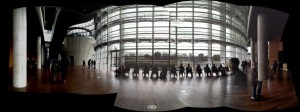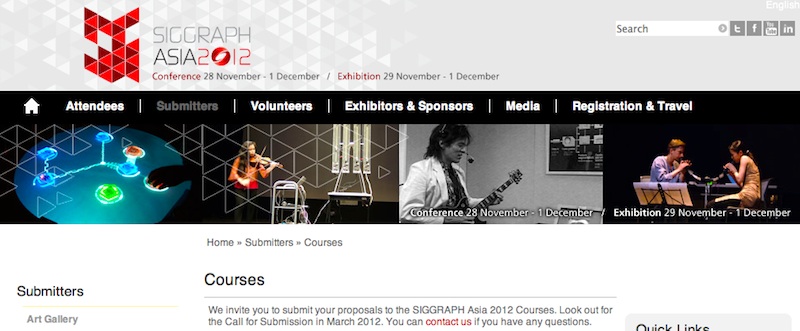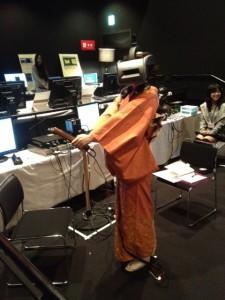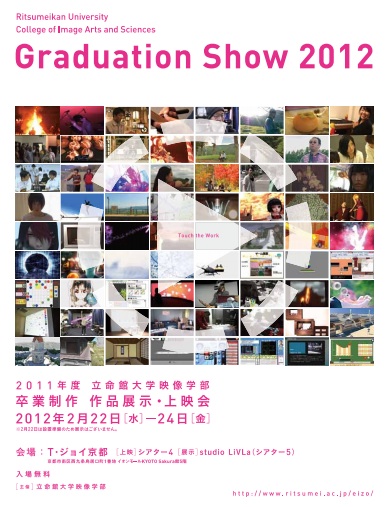The Australian Dance Theatre recently premiered PROXIMITY, a dance production using live video and visual effects. More information about the production is available in an article at the Create Digital Motion blog.
Category Archives: Events
As Slow As Possible


A performance of the slowest and longest musical piece in the world is underway in the church of St. Burchardi in Halberstadt, Germany, pictured above. The piece, ASLSP, was written for piano by John Cage in 1985, then re-written for organ in 1987. Cage recommended that the piece be played “as slow as possible”, hence the title ASLSP, but did not specify its exact duration. In the year 2000, a performance of the ASLSP was started using an automatic organ. The duration of the the performance is set to last 639 years. Why Halberstadt and why 639 years? From the website of the project:
Michael Praetorius, a composer of the late 16th and early 17th centuries, wrote that an organ with the first modern keyboard arrangement had been built in Halberstadt’s cathedral in 1361. This organ was the first one with a claviature of 12 notes and this claviature is used on our keyboard instruments today. So one can say that the cradle of modern music was in Halberstadt. Subtract 1361 from the millennial year 2000, and the result is 639.
The performance is streamed over the web and can be listened to at the link: ASLSP. The project description contains the following lovely thought:
In view of our fast moving age, this piece of music is a way of trying to slow down our hectic lives. The “discovery of slowness” and the planting of a “musical apple tree” can be understood as symbols of confidence in the future.
I learned about this project via Prof. Clark Lunberry, who guest lectured in the seminar last year.
n.b. The images above reside on and are linked from the website of the ASLSP project.
東京五美術大学連合卒業・修了制作展
The best art exhibition currently on in Tokyo is free, open on Mondays, allows picture taking, and is held in one of the most stunningly cool buildings in the metropolis, The National Art Center (国立新美術館). If you’re in the capital, this is the one to see. It feels very good indeed that our tax money is used in a way that is clearly beneficial to the well-being and future of the country.
(click thumbnails for larger images)
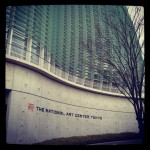
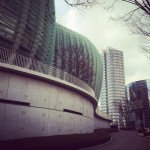
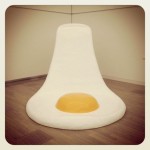
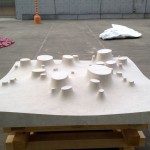
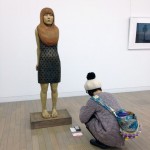
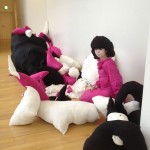
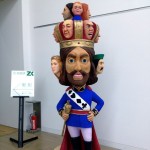
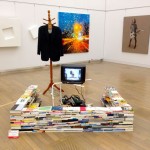
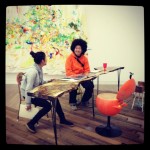
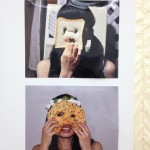
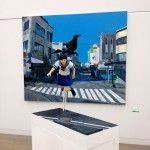
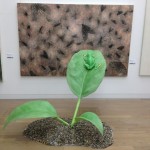
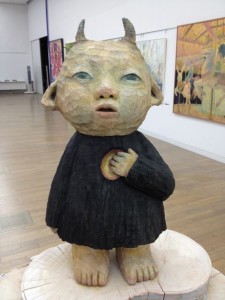
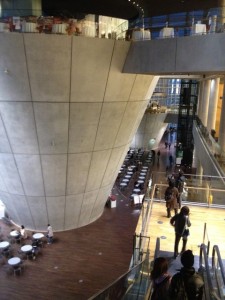
Siggraph Asia 2012 Web Site uses NIME Images
While checking the web page with instructions for course proposals for Siggraph Asia 2012, I was pleasantly surprised to notice that the Siggraph Asia 2012 page uses images from the course Prof. Sidney Fels and I have been teaching at Siggraph recently.
From left to right:
- The ReacTable developed in Sergi Jorda‘s group in Barcelona
- Mari Kimura with Eric Singer‘s Lemur Guitarbot during the concert program of NIME04 in Hamamatsu.
- Former professional jazz musician turned professional linguistics researcher (and former ATR colleague), Dr. Ichiro Umata, trying out the Mouthesizer, which I developed starting in 2000-2001.
- Musicians Linda Kaastra and Sachiyo Takahashi playing the Tooka, a collaborative flute developed in Sid Fels’ group. Picture from a performance at NIME05 in Vancouver.
Perhaps it is just a coincidence, but I suspect that what appeals to the organizers of Siggraph Asia 2012 about our images is the suggestion of East-West collaboration and combination of high-tech and high-culture, a mix that seems to suit Singapore, where the conference will be held.
卒展:お疲れさまでした。
Haruka Mitani (三谷悠華 ) and Moe Hayami (速水萌) at the reception desk.
Mami Ueta (上田真実) answering questions after the screening of her film Setouchi.
Sasagu Ota (太田献) answering questions after the screening of his film Three Minutes of Thought.
Congratulations to everyone on a successful graduation show and thanks for all your effort!
おめでとうございます!皆さん、よく頑張りました。
卒展:明日は最後の日!
卒展!
今週です!ゼミ生の皆さん、必ず見に行って下さい!
立命館大学映像学部卒業制作作品展示・上映会のご案内
卒業制作・作品展示・上映会
2012年2月22日(水)ー24日(金)
会場:T・ジョイ京都
View T・ジョイ京都 in a larger map
cagefest
This year marks the 100th birthday of John Cage, who is a kind of patron saint of this seminar. I’ve just noticed that Prof. Clark Lunberry, University of North Florida, is organizing cagefest in celebration of the John Cage centenary. The festival runs from March 24th – 29th in Jacksonville, Florida with a full program of concerts, performances, and exhibitions. Dutch sound artist Jaap Blonk will perform at the Jacksonville Museum of Contemporary Art as part of the festival.
Clark was a guest speaker in the seminar in July 2011. Atsushi Nishijima, who was a guest speaker in May 2011, has been organizing John Cage centenary count-down events for the past few years, in Kyoto and elsewhere in Japan. You can see Nishijima-san on rainstick in a video from one of the countdown events held at the Museum of Modern Art, Toyama, in November 2011.
March should be a very nice time to visit Florida, but unfortunately I don’t think I’ll be attending the Jacksonville cagefest.

